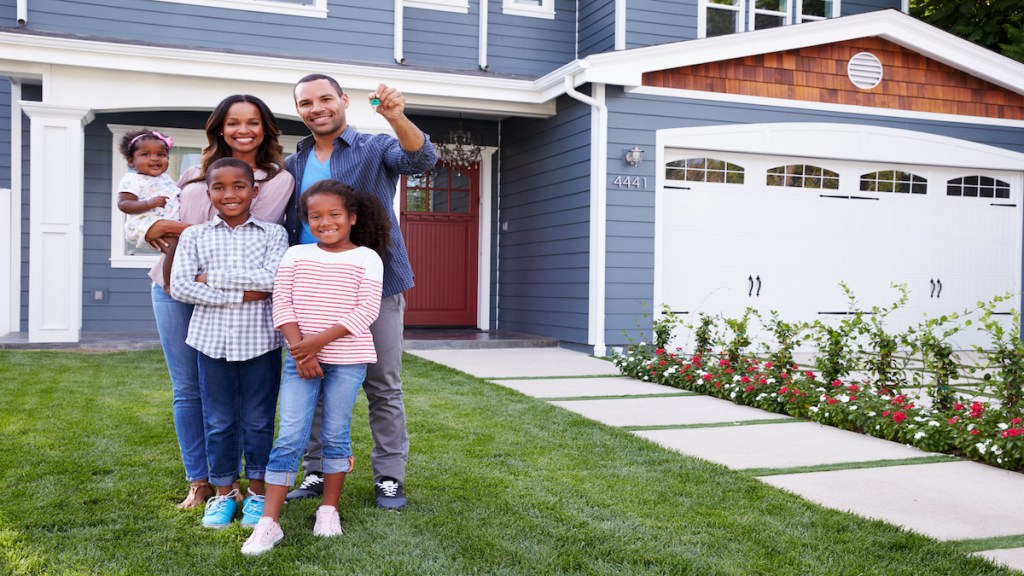February is almost over, but it’s not too late to say that it is a very important month, especially for 50 million Black Americans. Black History Month is a time set aside to recognize and celebrate the contributions, achievements, and history of African Americans throughout U.S. history. It’s an opportunity for everyone to learn more about this important history, and to better understand what this group has overcome.
This is important for anyone who wants to understand Black consumers and do business with them. By honoring this history, we honor the descendants of those who lived through it.
As diverse as any other ethnicity, many Black Americans are, at their core, hard-working, family-centric, church members who live, for the most part, in urban areas. Like the cities they inhabit, many have had a troubled past. For some, their present lives are troubled, often through no fault of their own.
The thing about history is that we make more of it every day. The actions we take today should serve to advance everyone in the system. My experience in the financial services industry tells me that there is more trouble for the housing economy on the horizon, for Americans of all ethnicities.
Here is why and what can be done about it.
Homeownership in the black community
You don’t have to be in the real estate business to know that homeownership is a cornerstone of the American Dream, representing stability, wealth building, and community ties. Black Americans know this well and see the path to homeownership as a way to build generational wealth and leave behind a legacy for their families. But they have found this path has been fraught with challenges, shaped by historical, systemic, and economic factors.
In the early 20th century, Black Americans faced significant barriers to homeownership, including racial segregation, discriminatory lending practices, and exclusionary covenants that prevented them from buying homes in certain neighborhoods. The practice of redlining, initiated in the 1930s, where banks and insurers refused services to entire neighborhoods based on racial composition, further entrenched these disparities.
After World War II, the GI Bill provided veterans benefits, including home loans. However, due to discriminatory practices, Black veterans often found it difficult to access these benefits, missing out on one of the most significant opportunities for wealth accumulation in American history.
The Civil Rights Movement of the 1960s led to significant legislative changes, including the Fair Housing Act of 1968, which aimed to eliminate discrimination in housing. But it wasn’t enough.
Despite these legal advancements, Black Americans still face challenges in achieving homeownership at rates comparable to other demographics. Systemic issues, such as unequal access to credit, discriminatory lending practices (like redlining persisting in different forms), and income disparities, have continued to impact the ability of Black families to own homes.
Today, homeownership among Black Americans still lags significantly behind other demographics. According to data from the U.S. Census Bureau, the homeownership rate for Black Americans remains the lowest among all racial and ethnic groups the bureau tracks in the United States.
Even when they win, they don’t. When they are ready to finance a new home, Black applicants are more likely to face tighter credit standards compared to other demographics with similar financial profiles.
Despite this, millions of Black Americans are homeowners today, the majority of them living in urban areas. They don’t know it, but they will be the first to be impacted by the next financial downturn.
Why I see these issues the way I do
I currently serve as CEO of a minority-owned asset management company focused on facilitating transactions that deliver high-yield returns for investors. My success is based on my skill at identifying, targeting, and acquiring distressed mortgage notes and properties that earn these returns.
If you want a high return, you’re more likely to find it in portfolios of distressed assets and REOs. You’ll find most of these assets attached to real estate in urban areas. Often, these homes are owned by Black homeowners.
I have a lot of experience with these markets in my portfolio. Where others in my industry might avoid these markets due to the uncertainty of generating returns, I lean in. I understand these markets very well.
I also know the inner city. I grew up in Paterson, N.J. Today, our headquarters is in Newark, N.J. Every city is fundamentally the same at its core. Sure, each urban center has its own flavor and each is special in its own way. But they all look very similar to me, both in terms of the real estate assets you find there, the relative value of its assets, the population that makes the area its home, and the distress many residents share.
Drop me into the middle of any city in America and I’ll find my way around. It’s home to me. I run a company that specializes in finding distressed assets and I can tell you that the distress is in our inner cities and it’s having a disparate impact on Black Americans.
I’ve seen it again and again in the portfolios we trade. People living in the inner cities are most at risk when times get hard. Those loans are always the first loans to go bad and it’s about to get worse.
The hard times that are coming
Getting more than one economist to agree on any prediction of future economic conditions is challenging. While they often agree in principle, they usually disagree on the details. After two years of a down housing market that followed on the heels of two years of an extremely hot market, everyone wants to know when the business will return.
Today, many predict that the U.S. might avoid a recession in 2024, or at least experience a soft landing. But even if the economy slingshots around the drain, commercial real estate, the skeletal structure of our inner cities is faced with many challenges.
The normalization of hybrid working arrangements will continue to limit office demand growth, and the biggest wave of new apartment supply in decades will temper rent growth, improving affordability for renters. Multifamily and neighborhood retail sectors are expected to remain strong, while the future of office buildings remains uncertain, especially as central business districts evolve.
Local governments are anticipated to focus more on housing affordability, with actions such as adopting land-value taxes and promoting building to make homes more affordable. Of course, this won’t work in urban areas where all the available land has already been divided up among the various stakeholders.
Those with the least power and the highest likelihood of being called upon to make up for any tax shortage caused by a floundering commercial sector are the homeowners. These residents, mostly Black, took out their loans when mortgage rates were very low and when they needed more cash, they opted for a HELOC instead of a cash-out refi, for a lower blended interest rate.
What we’re seeing now is higher delinquency in these second liens and more non-performing mortgage assets based on them. Homeowners are struggling with high credit card debt, but they are still managing to make their first lien payments.
The risk is that the problems with their seconds could cost them their homes in 2024.
The difficult solution that banks should embrace
Foreclosing on a second lien may be the easiest solution to this problem, but it’s not the best one. It’s certainly not the solution Black homeowners need now. Sending them back to the starting line won’t serve them. Besides, it’s unnecessary.
Any investor with a portfolio of non-performing HELOCs has a number of tools available that can get these loans back on track and help keep homeowners in their homes. But most of these solutions are not easy.
Some may involve partnerships with community organizations, non-profits, and even governmental agencies that can provide outreach, education, financial assistance, and advocacy to support Black homeowners.
Banks working alone will find that success requires consistent outreach to these borrowers to get them to engage. This can be challenging and costly for banks as delinquent loans require more time and resources to resolve. Additionally, borrowers will avoid contact with their bank, which creates additional challenges to finding a workable solution.
These delinquent loans are an extremely small portion of the banks’ portfolios. Most banks don’t have the time or resources to modify these liens.
Part of the problem is that many banks don’t know they can offload entire portfolios of non-performing second liens, but they can. If they sell it to an investor who understands the inner city and the homeowners that live there, it can be a win-win that also delivers a win to the city.
What the industry does now will become part of the history that future homeowners look back upon each February. I hope that Black History Month will remain a source of pride, empowerment, and connection to a heritage that we must not lose.
The best way to ensure that, to honor that history, is to build a better future by working together to keep Black homeowners in their homes.
Jason Lewis is CEO of AryMing Asset Management, a boutique private alternative investment firm
This column does not necessarily reflect the opinion of HousingWire’s editorial department and its owners.
To contact the author of this story:
Jason Lewis at jlewis@aryming.com
To contact the editor responsible for this story:
Tracey Velt at tracey@hwmedia.com






